There can be your advertisement
300x150
Mirror Tile in Interior Design: Design Ideas
Mirror tile in interior design looks very stylish. It expands space and adds light and volume to the room. Reflective surfaces are durable and do not require labor-intensive maintenance.
Make the interior unique and refined, visually expand the boundaries of the room, fill a dark space with light — all this can mirror tile. It consists of mirror segments of various shapes with safe edges. Such decoration will be appropriate in any room. Thanks to a rich assortment, it is easy to choose the right variant of mirror finishing.
Characteristics and technical specifications of mirror tile
Mirror tile is made by cutting large reflective sheets into products of the required size and shape. On individual order, you can get finishing material with any parameters. The standard and most common form is square, its size varies from 9 to 30 cm.
The next stage of production is edge finishing. The edges are processed so that customers can safely use the tile without fear of getting injured.
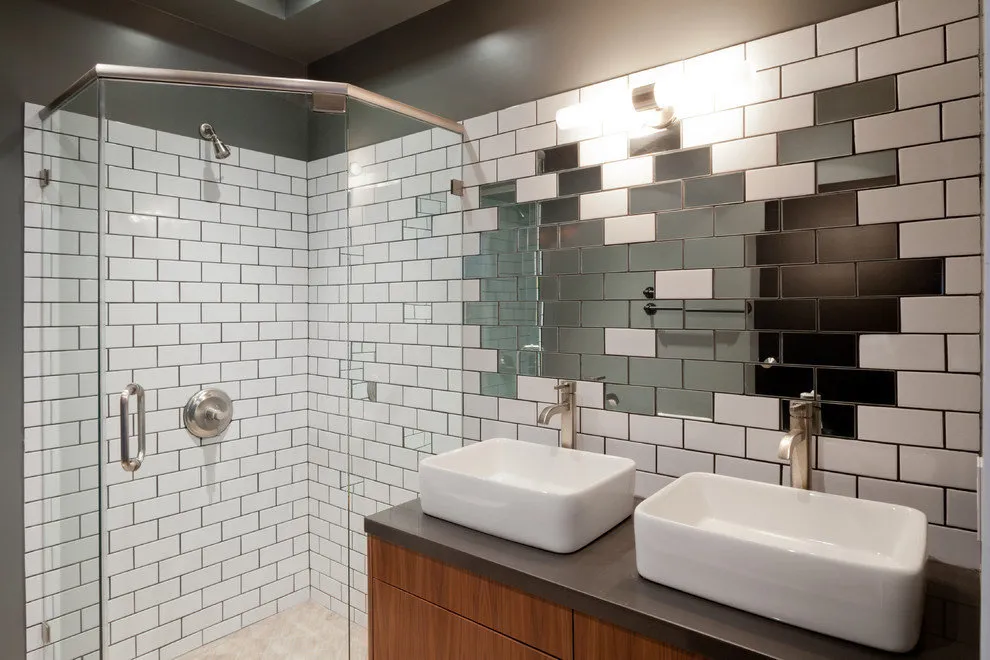
Distinguishing features:
high light reflectivity;
good moisture resistance;
ecological safety: no hazardous lead and copper impurities are used in the production process.
A cheaper version of mirror tile is made from polystyrene. The front side is coated with a paint layer containing metal particles. The quality of reflection of such tile is noticeably lower, but it is easy to cut and paint in different colors. Reliefs can also be created on the surface. The inner side of polystyrene tiles often has self-adhesive film, which significantly simplifies installation.
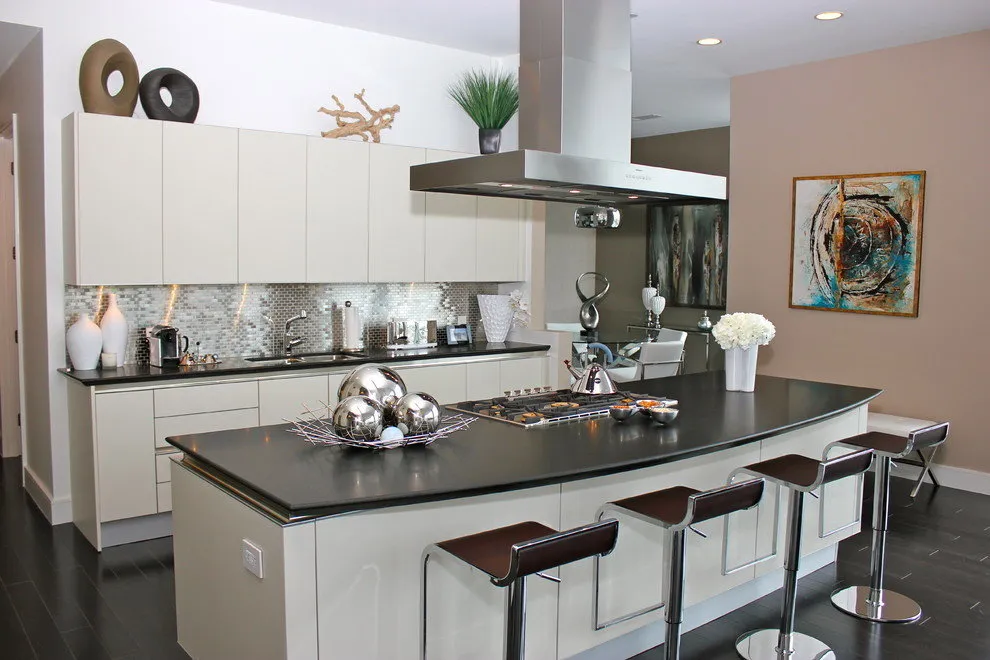
Advantages and disadvantages
Mirror tiles have several advantages:
they are very durable if installed and used correctly;
do not burn;
wide selection of assortment: they differ in color, size, shape, texture;
moisture-resistant;
environmentally safe;
visually increase space;
easy to maintain;
versatile in application.
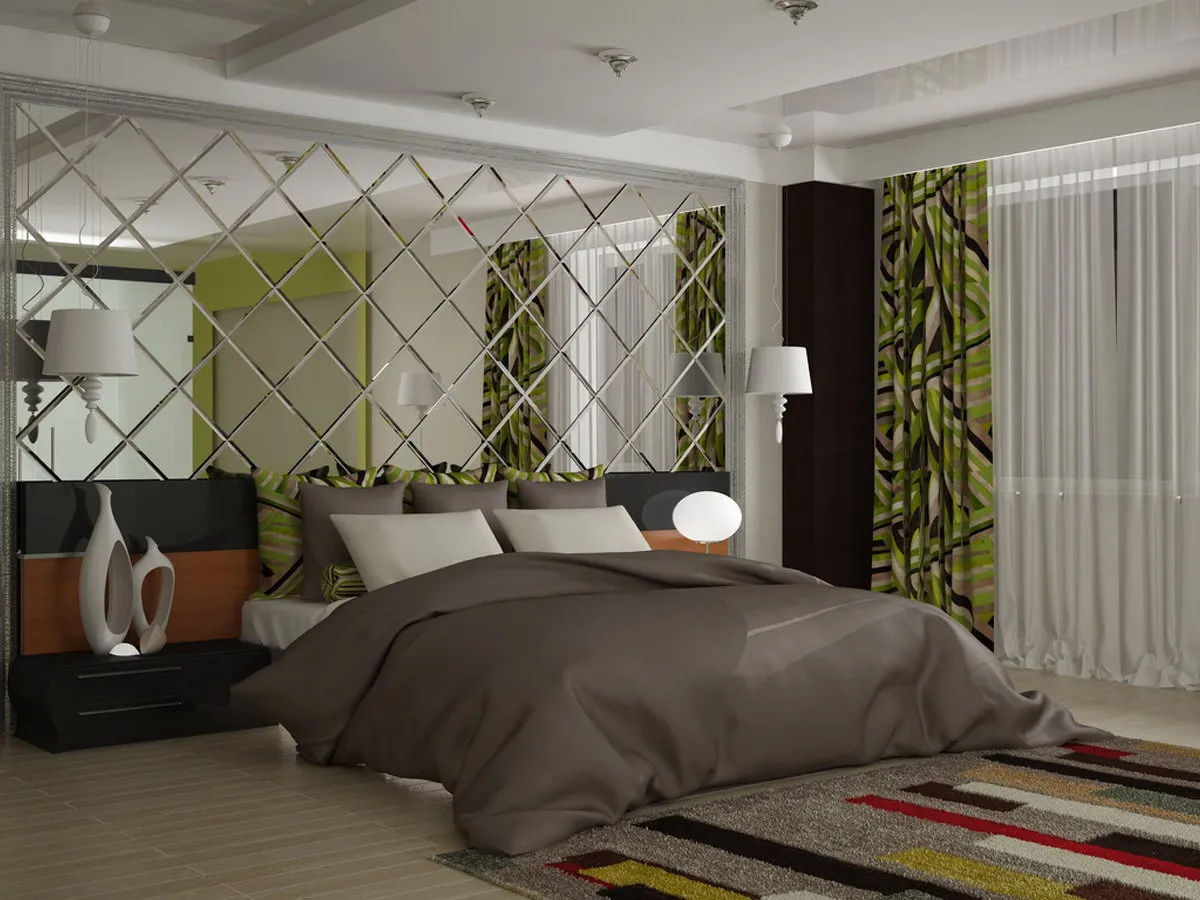
But there are a few disadvantages:
Tile is easily damaged during transport and installation. In this case, injuries may occur.
Due to improper operating conditions (insufficient ventilation and high humidity), spots and darkening appear on the surface.
Relatively high cost, if compared to ceramic tiles.

Types of tile
The shape of modern tiles is not limited to traditional squares and triangles, which differ in size. There are triangles, rhombuses, polygons, bricks and others on sale.
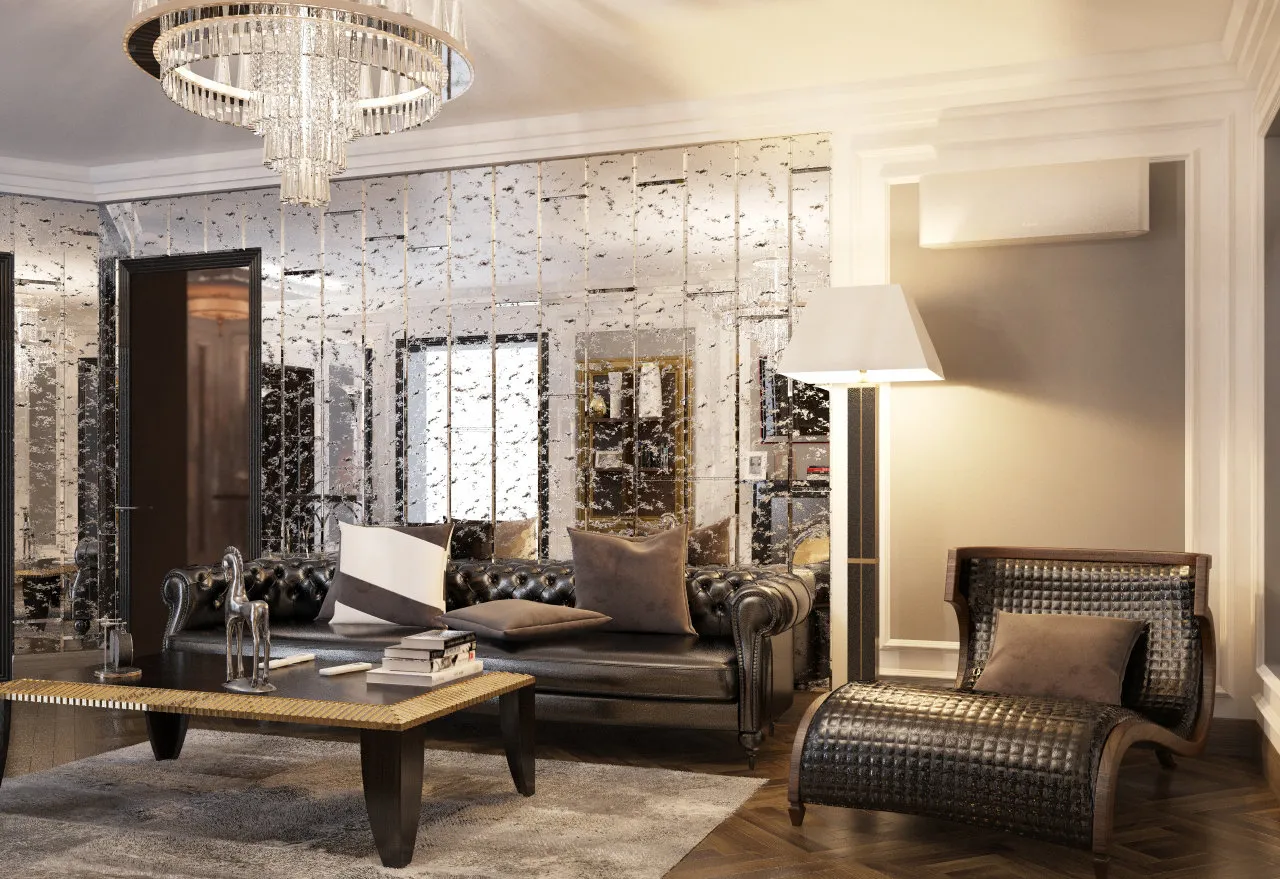
There are differences in mirror tiles by variants of execution:
A perfectly smooth finishing material without relief, where joints are almost impossible to see. This feature allows creating a seamless surface.
With metal imitation. The surface looks like silver, gold or bronze. Artificial signs of corrosion are also often on the coating.
Toned tile. The glass shade can be very different: from more common smoky to bright red.
With patterns, designs, ornaments, which are applied using laser or sandblasting. This type helps make the interior unique and unrepeatable.
Faceted tile. Due to slanted edges, this type is convenient for installation. In addition, light is refracted on the surface, creating beautiful reflections.
With a relief surface. Three-dimensional patterns and images look very unusual.
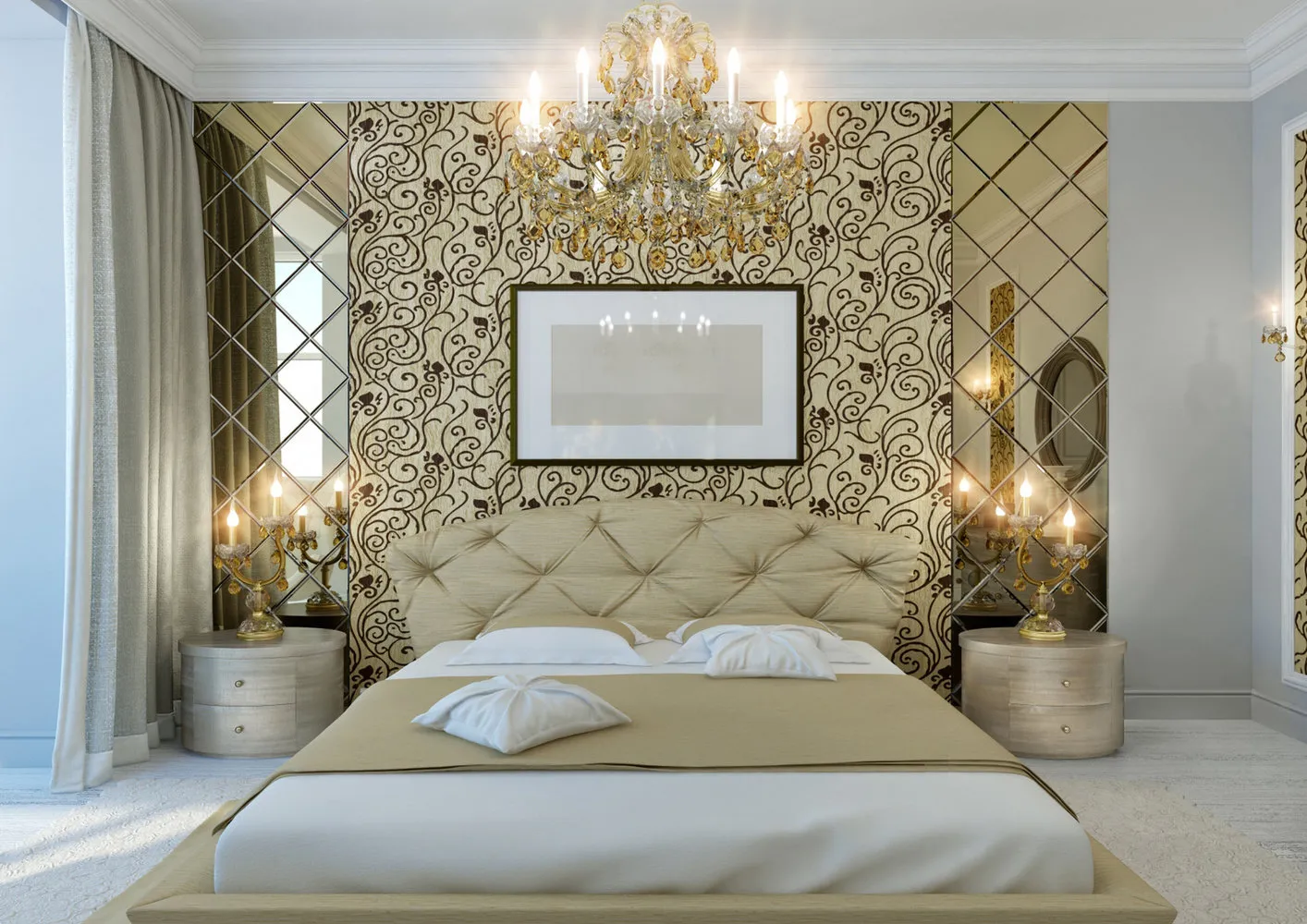
Installation features
Mirror tile can be laid on almost any surface, especially attractive on walls and ceilings. Beginners may face difficulties with installation because this tile has a smooth surface, unlike ceramic tiles.
Before installing the tile, you need to prepare the base. It should be as flat as possible; otherwise, it is almost impossible to achieve a uniform surface. If roughness is not removed, it will cause distortion of the mirror image. Plan in advance in what order you will lay the tile. Their sizes can differ, so consider this before starting to lay.

If possible, do not trim the edges of the plates. The appearance of the product deteriorates significantly if special edges are cut off. If it is impossible to avoid trimming, use a glass cutter carefully to prevent chipping and cracks.
If the base and material are prepared, you can begin installation work. The first row of tiles is laid horizontally. Each laid row is checked for levelness with a builder's level. Leave small joints (up to 4 mm) between the plates, which will help preserve the integrity of the pattern.

Do not rush during installation of mirror elements, otherwise there is a risk of damaging them and leaving ugly scratches. Press tiles gently against the base using soft fabric. Then wait a few seconds for the adhesive to set.
Mirror products are secured in several ways. To a suspended ceiling, they are attached using screws. To walls and floors — with silicone-based adhesive, liquid nails, or a mixture of bitumen and sand (if the back side is opaque). It is important that the composition does not contain acids, as they can cause spots on the surface.

When the installation process is complete, leave the tiled surface to dry completely. This may take from 1 to 3 days. After that, the joints are treated with silicone grout to prevent moisture penetration between mirror tiles. The final stage is polishing with soft fabric.
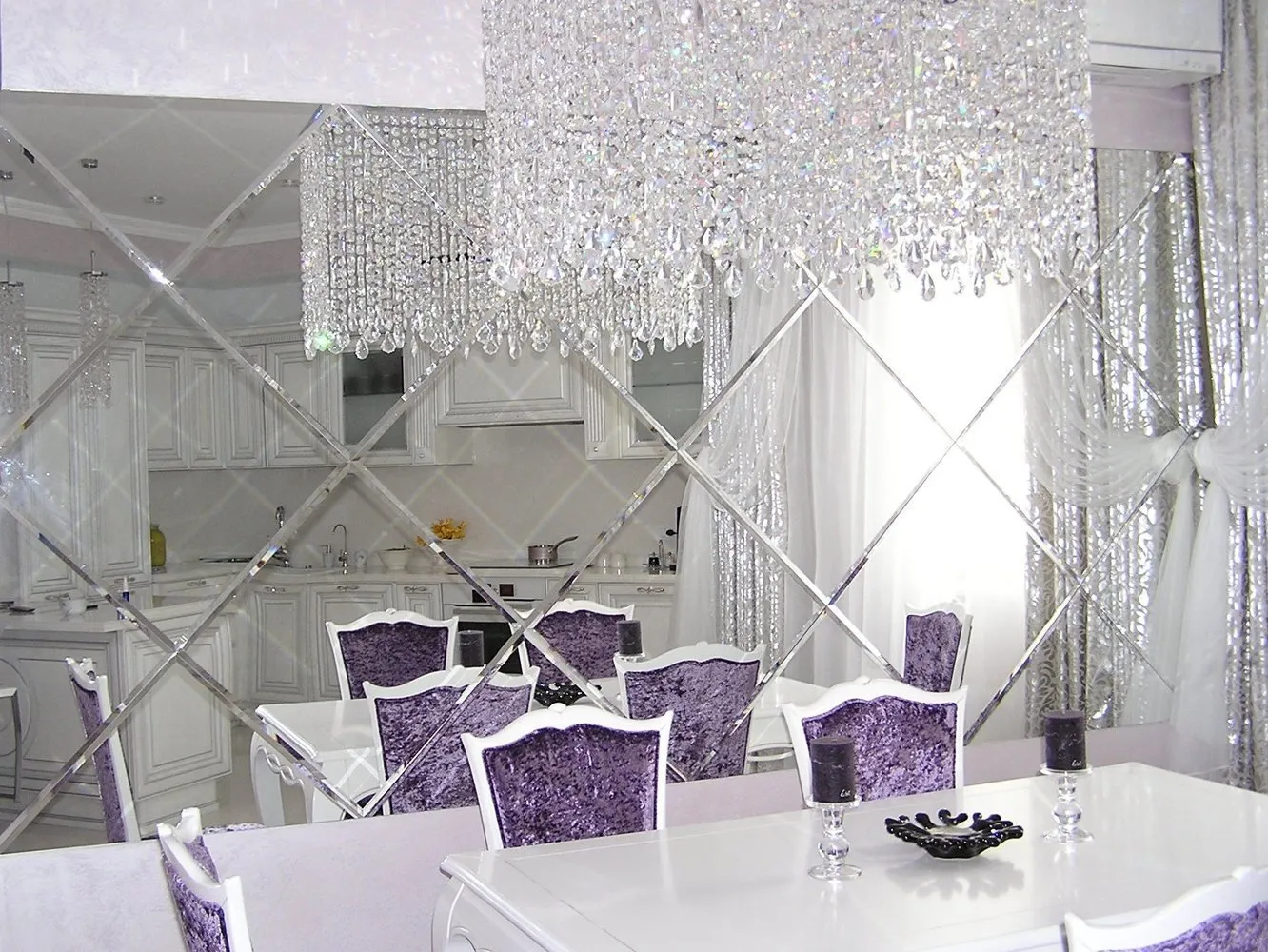
Cleaning rules
Mirror tile, like other types of finishing, requires regular care. The attractive appearance of the product will be preserved if cleaning procedures are done on time. If there are no visible stains on the surface, it is enough to simply wipe it with a damp soft cloth. Stains and smears can be removed with special cleaning agents for glass or mirrors or cellulose wipes. You can also use a solution of table vinegar and warm water.

Do not use hard brushes or metal sponges, as well as products containing abrasive particles. Due to this, scratches appear on the mirror surface. They not only spoil the look of the tile but also become places where bacteria multiply actively.
Do not forget to dry the surface after cleaning. Use a wipe or a soft fabric fragment for this. This simple procedure will restore the shine of the tile. To prevent mirror coating from attracting dust, you can buy a protective agent with anti-static effect.

Techniques for using mirror tile in interior design
To expand a small room, you need to decorate the wall opposite the window opening with mirror tile. At the same time, pay attention to ensuring that direct sunlight does not hit the mirror composition. It is better to make reflective inserts above the window level. Do not overdo it and use too much tile, otherwise the room will not be cozy. Mirrors should be a supporting element, not the central one.
If it is necessary to visually narrow the room, the wall covering should be in dark tones. Mirrors can also be combined with other materials. Avoid full surfaces or place large elements in thick frames.

Opposite walls should not reflect each other. This will negatively affect the psychological state of the homeowners and cause eye fatigue. It is better to place mirror panels at different levels.
A low ceiling will look higher if it is finished with a mirror coating. It is not necessary to cover the entire area with tiles, it is enough to make the central part of a multi-level ceiling mirror. The finishing can be complemented with bright chandeliers and lights.
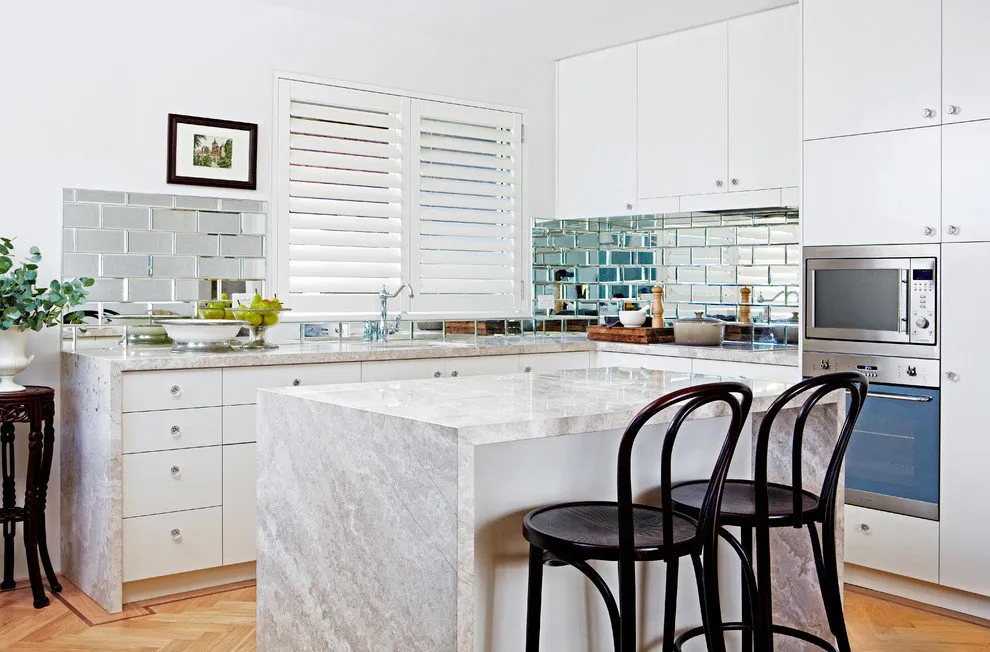
Tile in interior design
Due to the variety of sizes and forms, mirror tile can be used in interior design of any room: living room, bedroom, kitchen, bathroom and even hallway. It is important to carefully plan where exactly the reflecting surface will be located and choose appropriate finishing material.
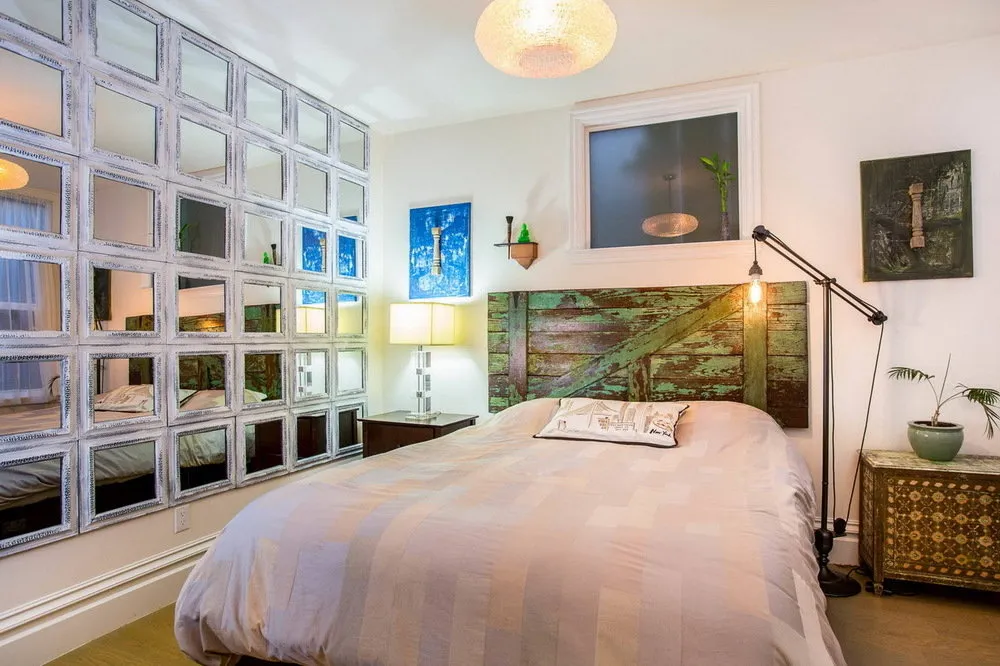
Living room
Mirror tile in interior design of a living room can be used in various ways, it is suitable for the ceiling, walls, floor and even furniture items. Including a mirror layer in a multi-level ceiling visually increases the height of the living room and makes the space more voluminous.
Decorating walls with this finishing material also visually expands the space. One wall or its part is enough to transform the room. It is better if mirror inserts are located opposite or next to the window. If you decide to decorate two opposite walls, place the reflective surfaces at different levels to avoid a tunnel effect.
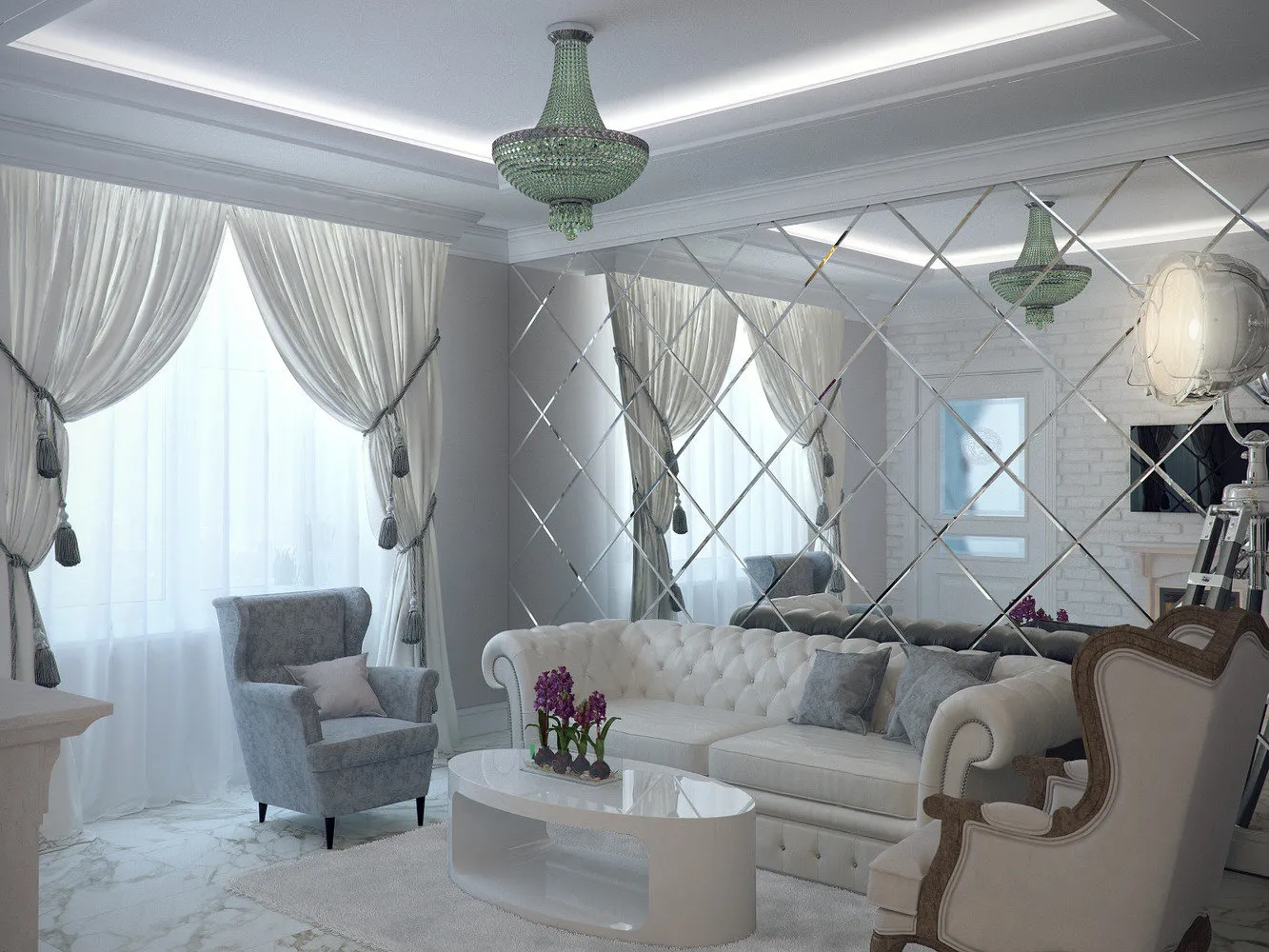
Walls can be decorated with mirror panels. Bright flower arrangements or original decorative items can be placed nearby. They will reflect in the tile, enhancing the beauty of the living room.
Mirror elements are also used for room zoning. For example, you can highlight the sofa or fireplace area. You can also decorate niches, pilasters, arches or columns.
An unusual way of using tiles is to finish furniture items. Cabinets with mirror mosaic, bookshelves and countertops will acquire a completely different appearance.

Bedroom
In the interior of a bedroom, mirror tile is preferably used so that it does not reflect the bed. Therefore, it is better not to cover the walls and ceiling entirely with it. The most popular option for use — a mirror composition on the wall near the head of the bed.
 Design: Elena Solovyova
Design: Elena Solovyova
Mirror tile can be used to decorate wall niches, the space near the door or pilasters by the window. Reflective surfaces are used to decorate areas around the chandelier on the ceiling or lighting fixtures on the walls. You can also highlight a section where the vanity table is located.
Depending on the stylistic design of the room, mirror tiles on the wall can be smooth, toned, textured or decorated with patterns. Designers often use faceted tiles in bedrooms. Thanks to the light that refracts on the edges, a mysterious and cozy atmosphere can be created in the room.

Kitchen
A more traditional option is to use mirror tile in interior design of a kitchen or dining room. Such finishing looks interesting in both the working and dining zones. It is not practical to make fully mirror walls in this room, as it will take a lot of time for cleaning.
It is enough to partially decorate one wall opposite the window so that the kitchen visually becomes brighter and more spacious. Such finishing in the dining zone will look especially effect if mirror tile is combined with glossy furniture or glass decor items.
 Design: Olga Vasilyeva
Design: Olga Vasilyeva In the food preparation area, you can make a mirror kitchen apron. With such finishing, good ventilation is mandatory, otherwise the surface will regularly be covered with a layer of grease from cooking food. It is impossible to completely avoid this problem, so it is better to prepare for regular cleaning of the apron. How often you need to do this depends on the tile size. On large sheets, spots will be more noticeable, so small tiles are preferred for finishing. Also, in this zone, mirror tile is often combined with regular ceramic.
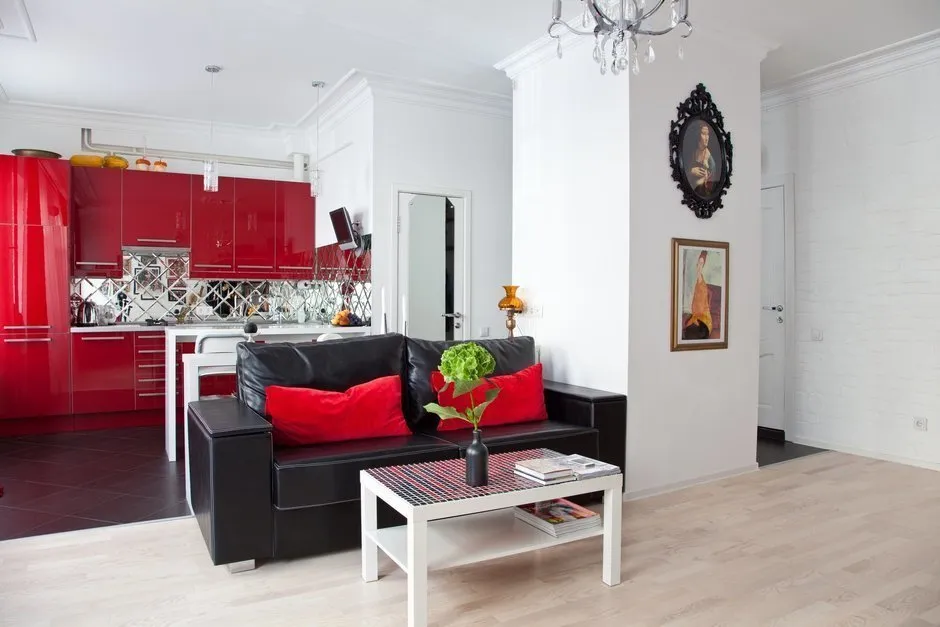 Design: Katya Chernova
Design: Katya Chernova 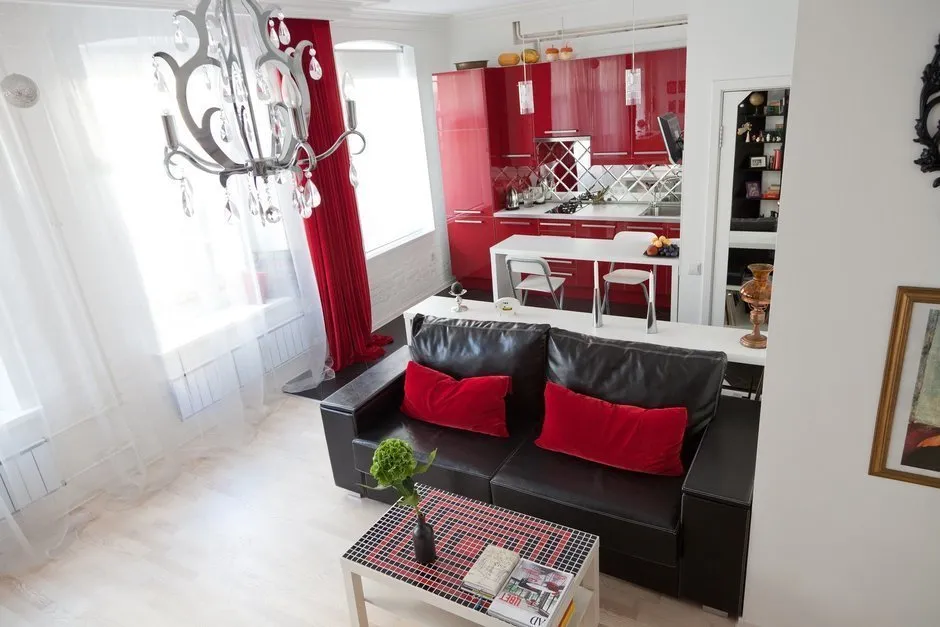

Hallway and corridor
Often corridors and hallways are poorly lit spaces with impractical elongated shapes. Using mirror tile in interior design of such rooms can hide these imperfections. Reflective surfaces located on the wall or ceiling near lighting fixtures will make the room brighter.
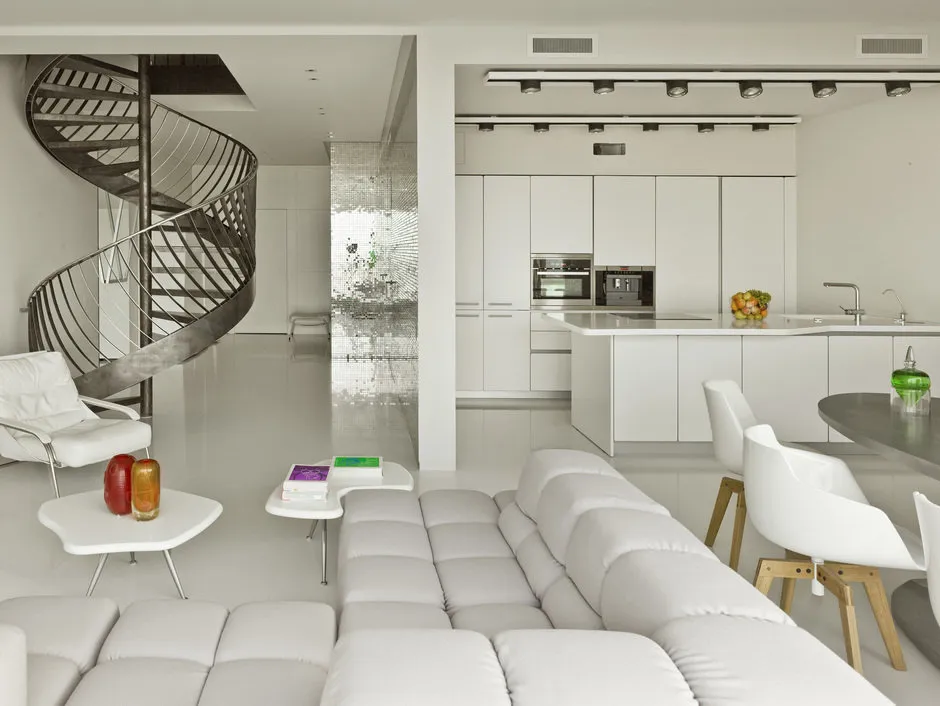 Design: Elena Solovyova Artburo 1/1
Design: Elena Solovyova Artburo 1/1
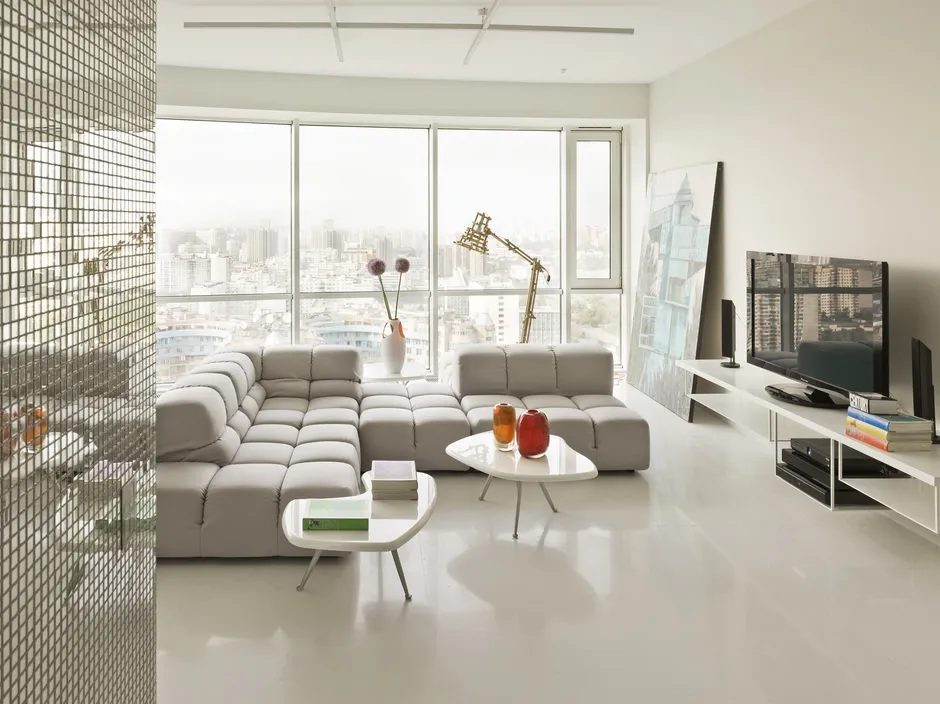
Visually expand the size of the hallway with a mirror ceiling. Walls, partially or fully tiled, can solve the same task.
Often tiles are combined with simple mirrors. For example, a frame made of small plates is made for the mirror. In this case, you can go beyond standard square or rectangular forms and create complex compositions.

Bathroom
The bathroom is a room where tile is often used for finishing. Mirror material is laid on parts of walls and covers all surfaces. In poorly lit small spaces, such finishing will be very appropriate. But it is important not to overdo it so that the bathroom does not look too cold.
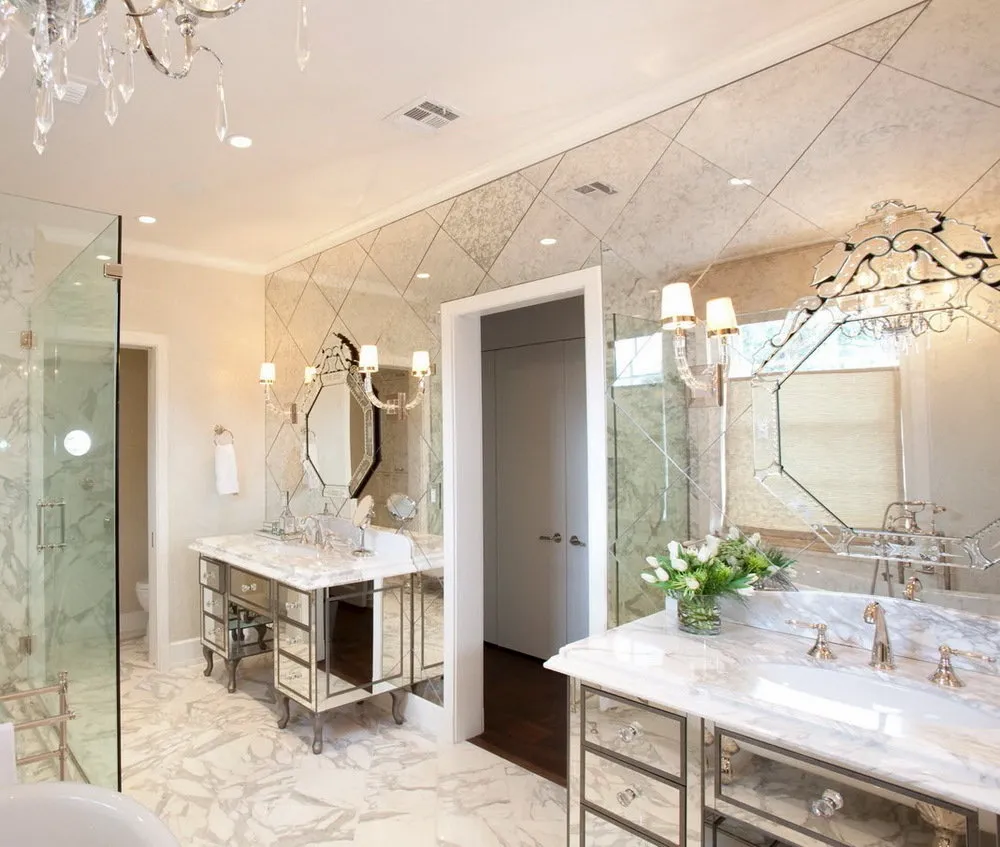
It is preferable to make an accent on one surface, often it is the wall behind the sink, bathtub or shower cabin. Mirror tile can be combined with ceramic tiles. Designers recommend that items made of different materials should be approximately the same size. This combination will look most favorably.


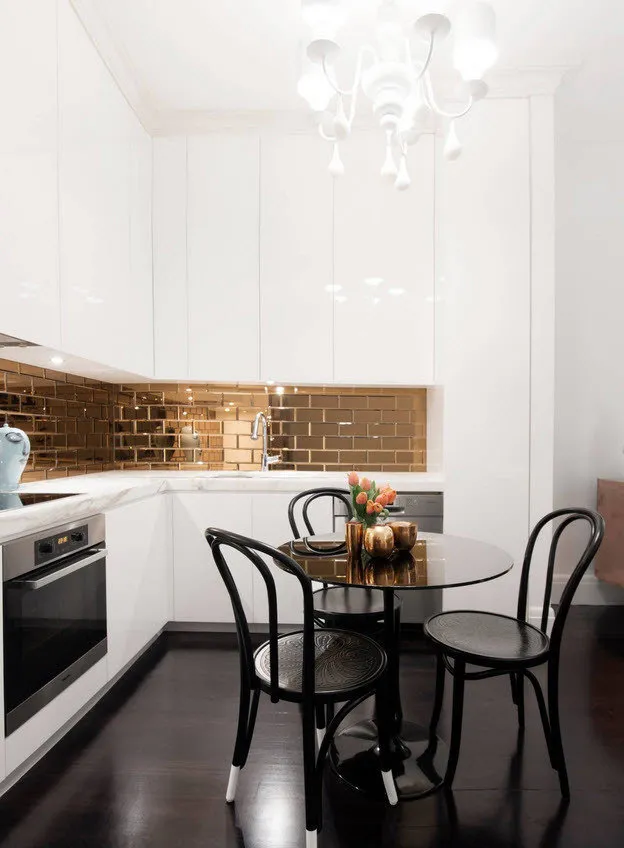
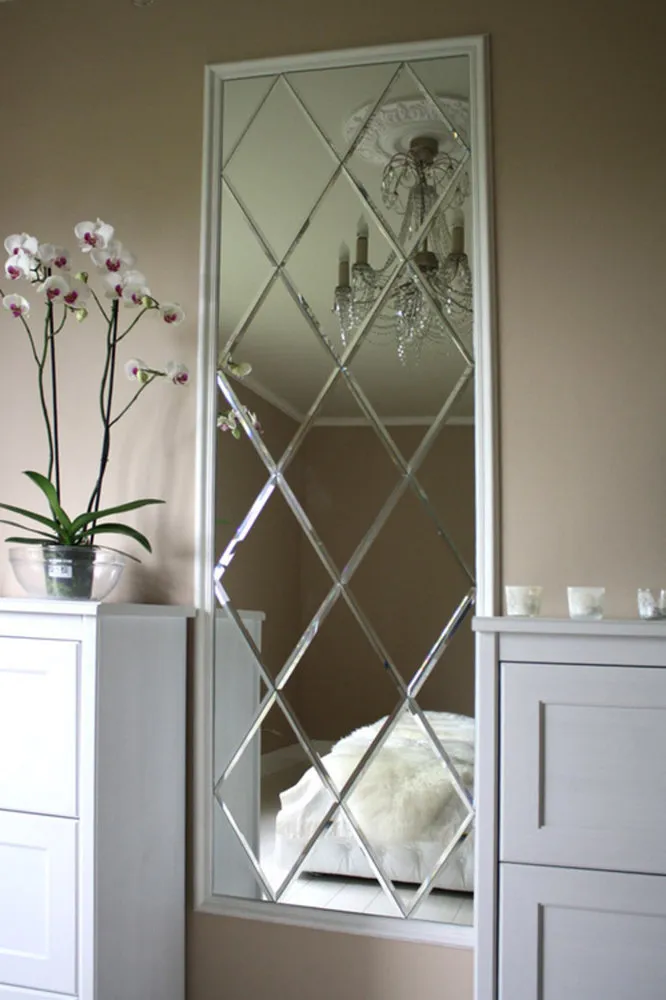
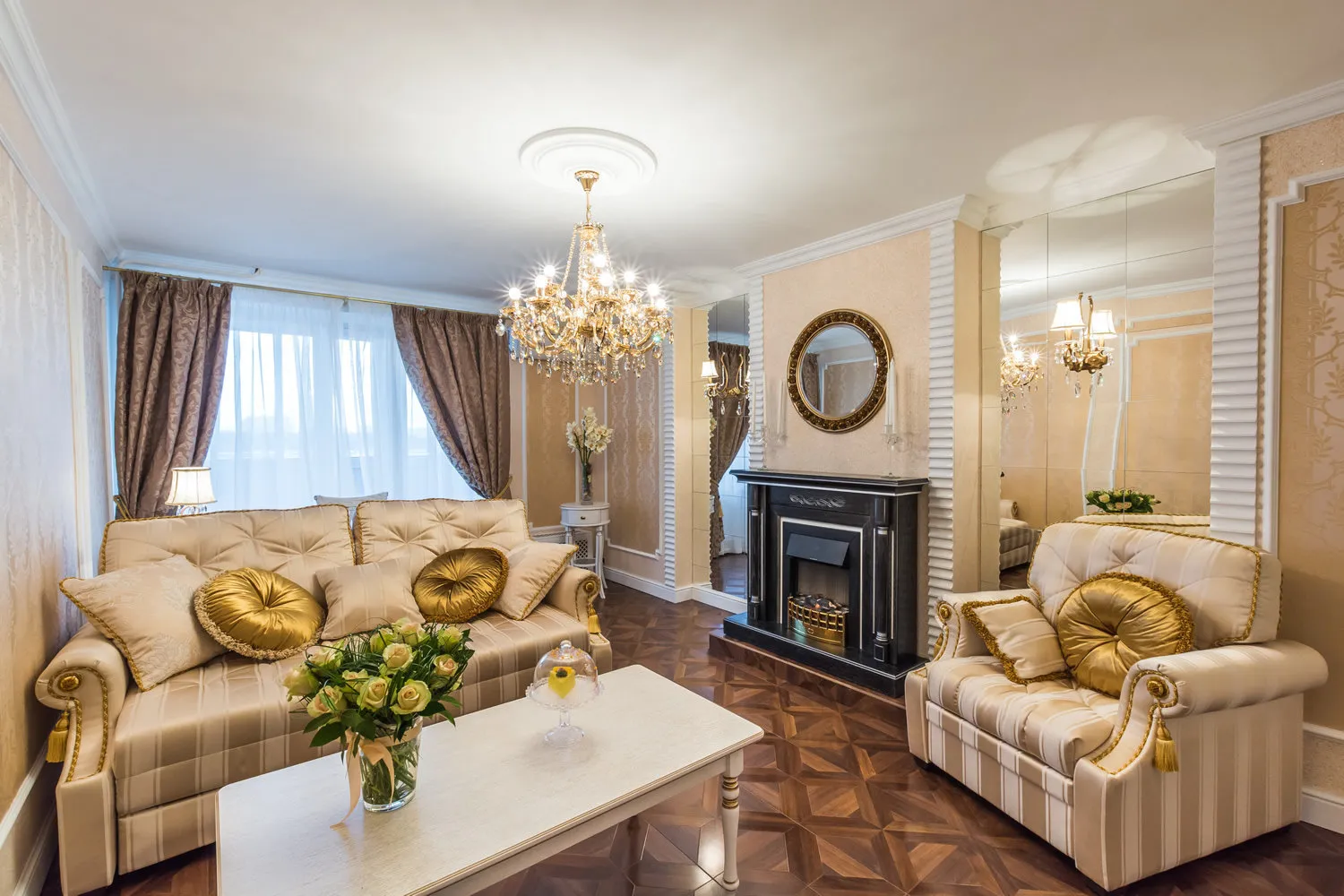
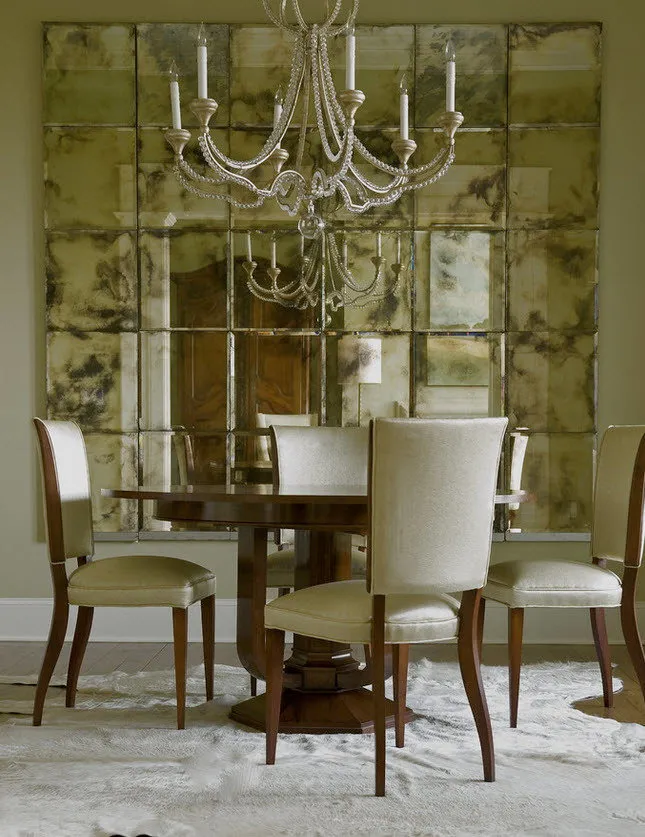
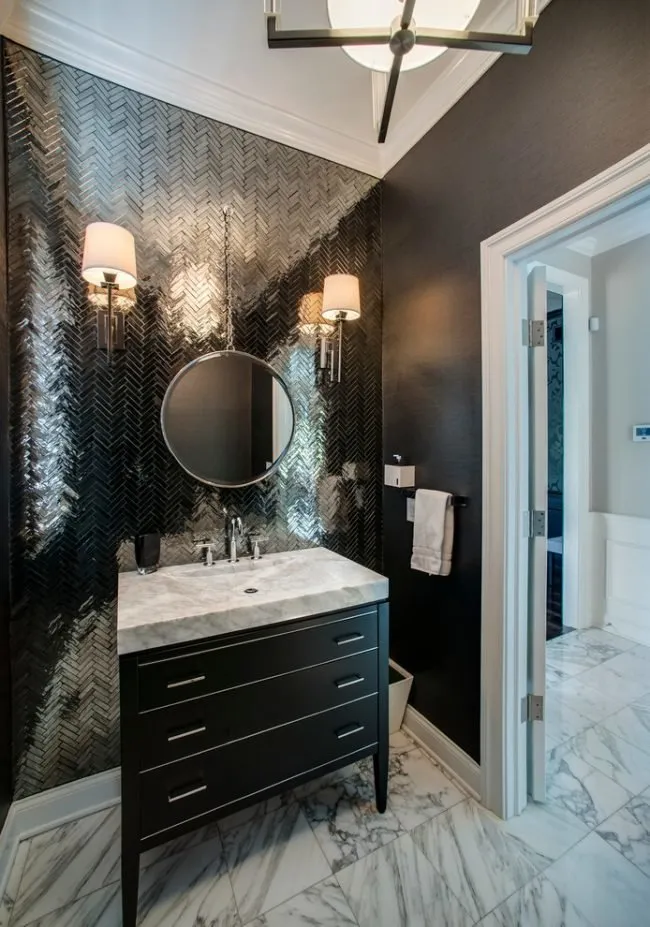
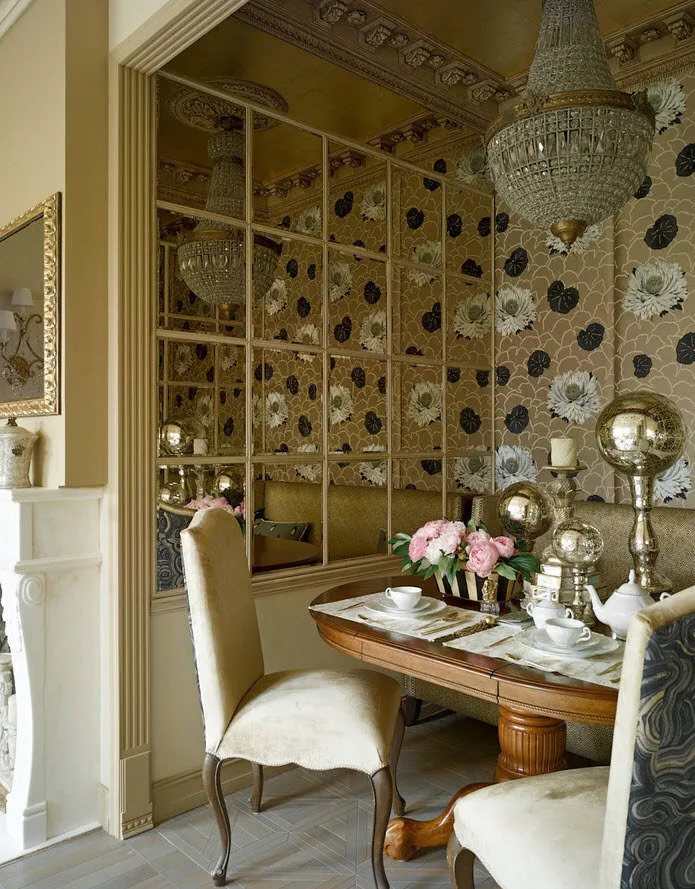
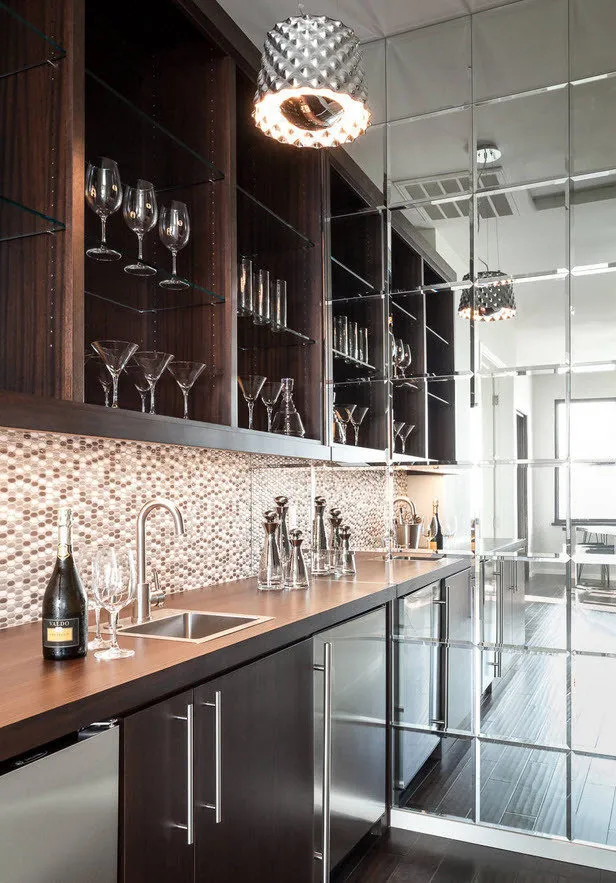
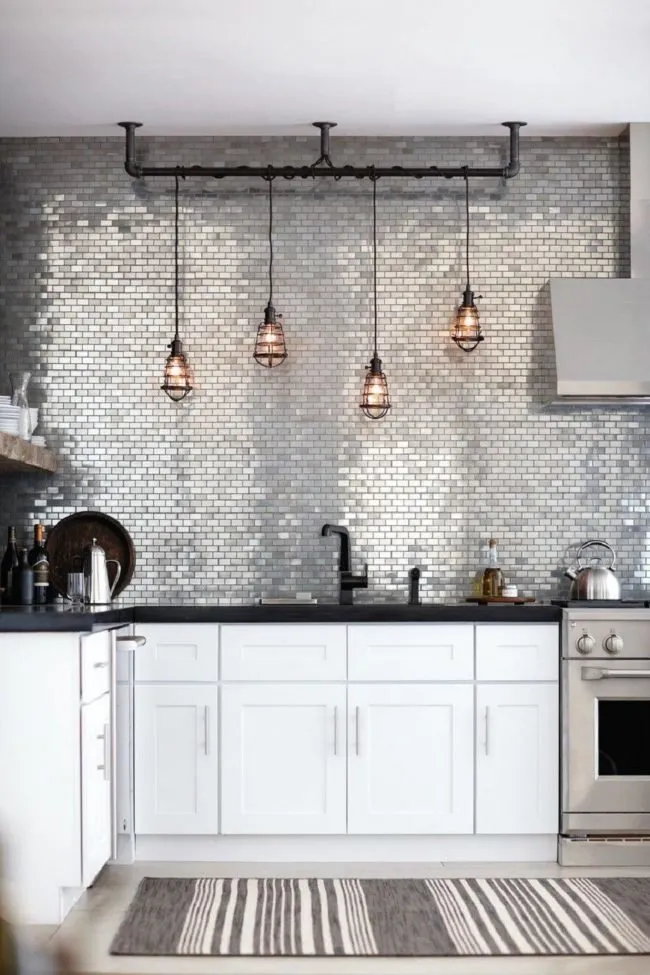
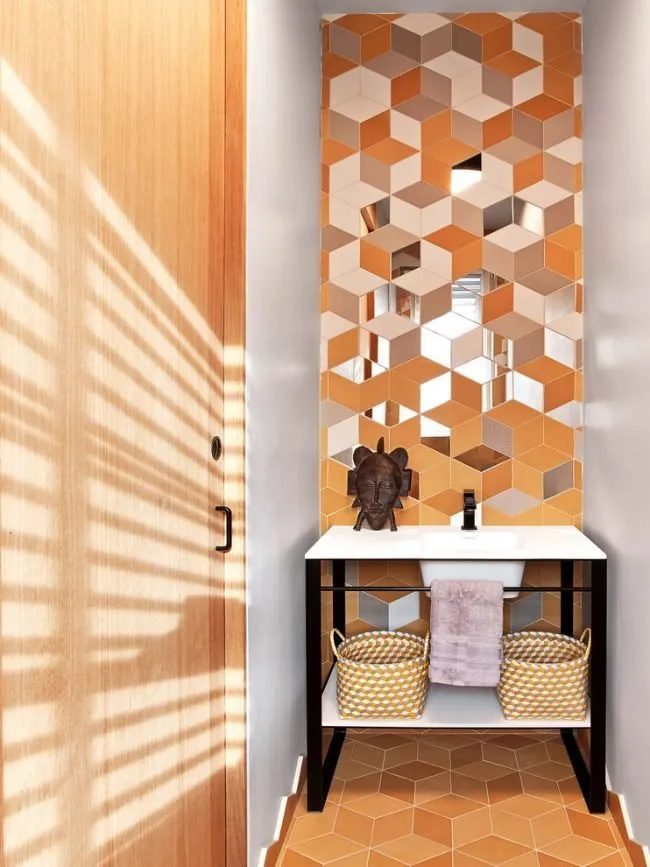
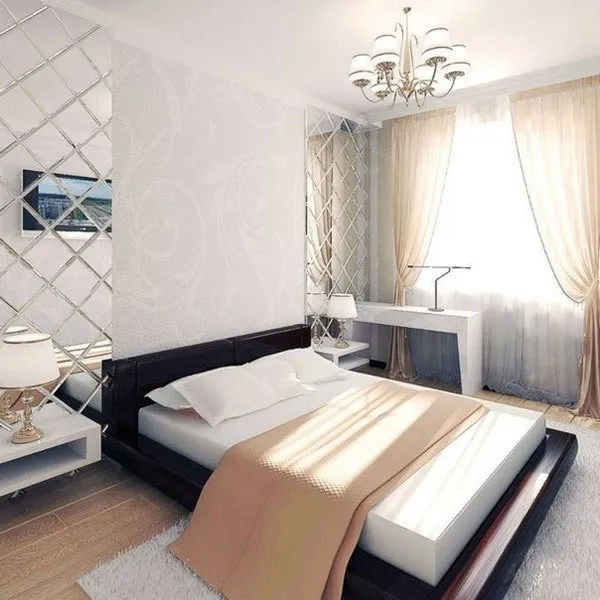
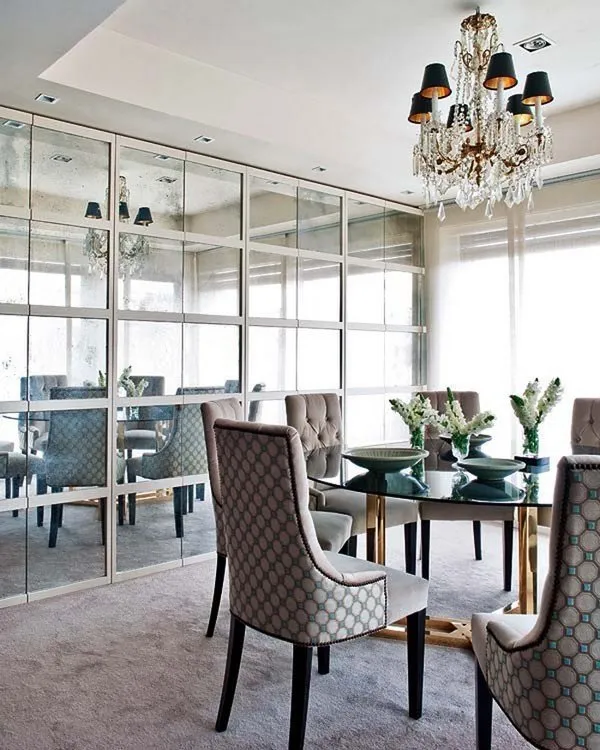
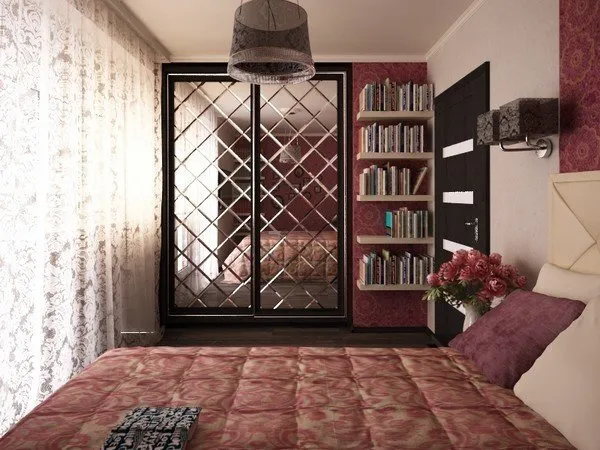

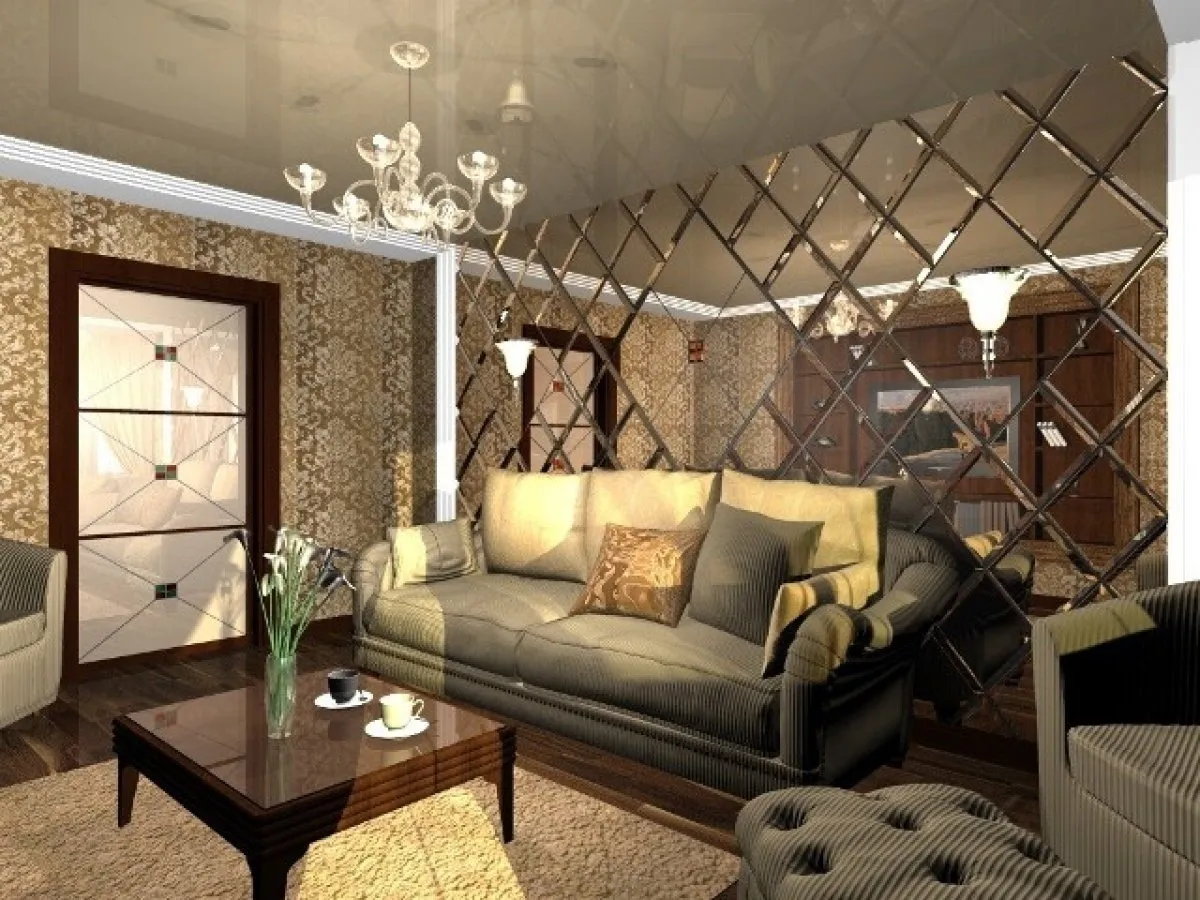




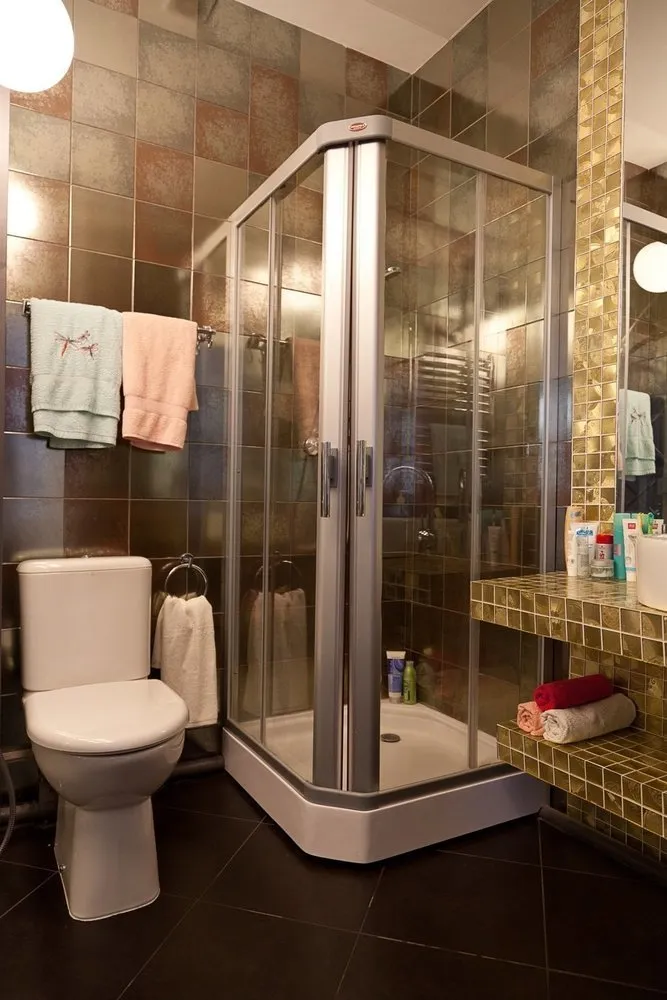
Mirror tile is in demand among many designers because with its help, you can correct the features of a room. Rooms decorated with this finishing material look fresh and modern.
More articles:
 Green Kitchen in Interior with Photos
Green Kitchen in Interior with Photos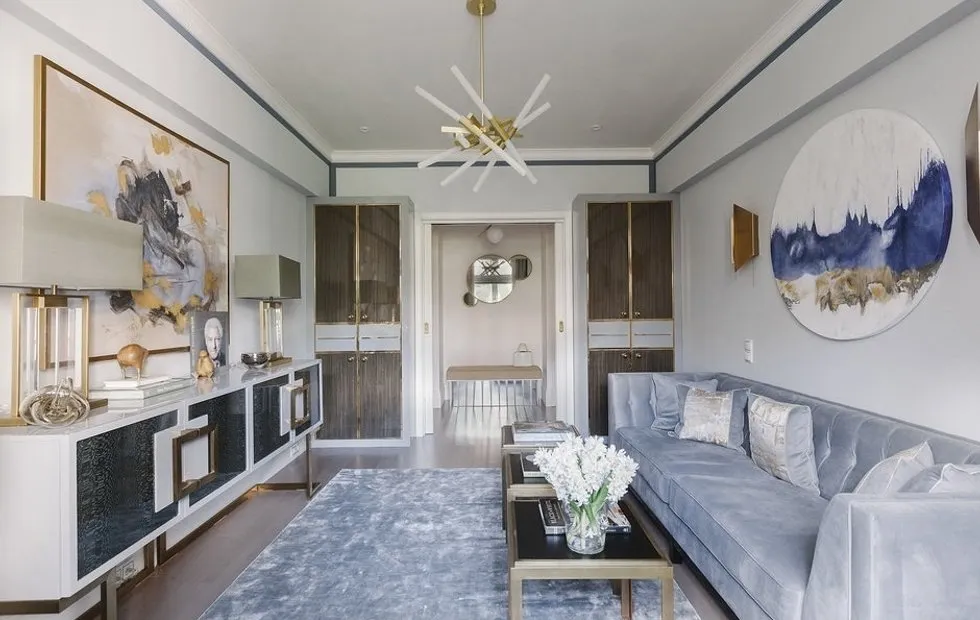 How to Make a Cozy Trashy Apartment: Interior Box Project
How to Make a Cozy Trashy Apartment: Interior Box Project Guide to New Year Gifts: Super Ideas for Everyone
Guide to New Year Gifts: Super Ideas for Everyone 11 Design Solutions for a Happy and Comfortable Home
11 Design Solutions for a Happy and Comfortable Home Why was the Housing Complex 'Swan' on Leningradskoe Highway considered the most prestigious house?
Why was the Housing Complex 'Swan' on Leningradskoe Highway considered the most prestigious house?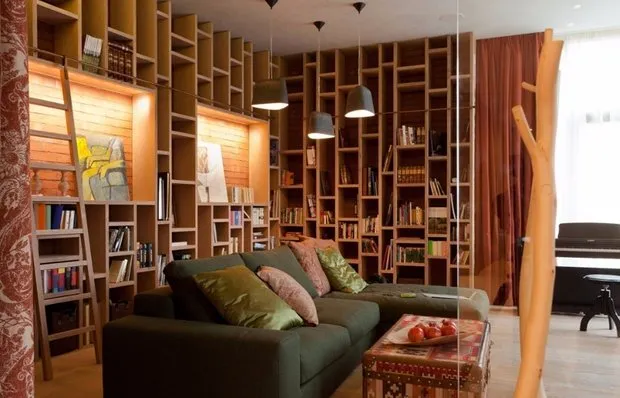 Placing Reading Lights in Interior: Tips + Schemes
Placing Reading Lights in Interior: Tips + Schemes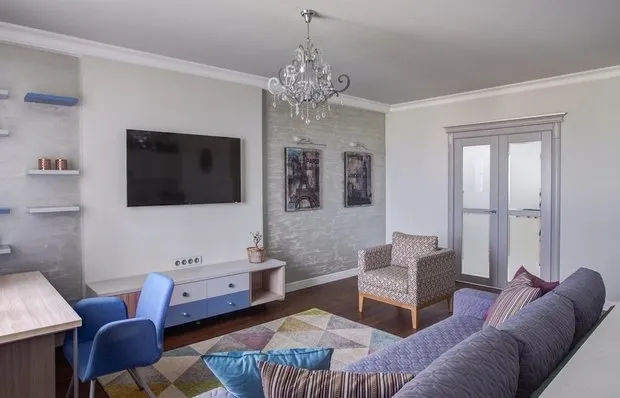 Venetian Plaster in Interior Design: Photos, Characteristics, and Usage Tips
Venetian Plaster in Interior Design: Photos, Characteristics, and Usage Tips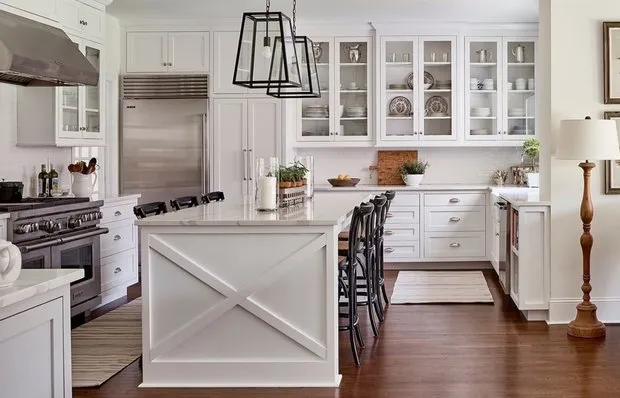 Vintage and Family Relics: Artist's House in America
Vintage and Family Relics: Artist's House in America